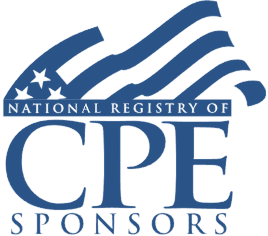- videocam On-Demand Webinar
- signal_cellular_alt Intermediate
- card_travel Accounting
- schedule 110 minutes
Implementing New FASB Not-For-Profit Financial Statement Reporting Standards of ASU 2016-14
Major Changes in Net Asset Classification, Liquidity and Expense Function Reporting, and User Clarity
Welcome! Save 30% on all CLE, CPE, and Professional Skills webinars, plus 15% off any annual pass with code HOLIDAY25
About the Course
Introduction
This course will provide advisers to nonprofit organizations with a practical guide to the new FASB reporting requirements. The panel will discuss the specific changes to various financial reporting requirements required by the new standard, including the reduction in the number of net asset classes, change in presentation of cash flows, and enhanced reporting on liquidity. The event will offer useful guidance in designing a plan to transition to the new reporting protocols, and weighing reporting alternatives.
Description
New standards issued in Aug. 2016 represent the most significant changes to not-for-profit (NFP) financial reporting in almost a quarter century. The new requirements, issued in ASU No. 2016-14, are designed to make it easier for financial statement users and stakeholders to understand NFP financials.
The major differences between the new standards and existing practice involve increasing disclosures NFP entities are required to make in reporting cash flows and liquidity risks. The new rules allow nonprofit entities to choose whether to disclose information pertaining to the nature of expenses in notes to the financial statements or on the face of the statement.
The new standards also require nonprofits to reduce the number of net asset classes from three to two. Financial officers at NFPs must carefully examine their asset structures, particularly assets with significant donor restrictions and endowments that are “underwater.” These new standards are part of FASB’s ongoing plan to dramatically improve the usefulness NFP financial reporting and transparency to the users of the financial statements.
Listen as our experienced panel provides thorough and practical guidance to the new NFP reporting standards for net assets, expenses and liquidity.
Presented By
Ms. Kowalczyk is a Senior Audit Manager with more than 12 years of experience providing audits, reviews and other attestation services to for-profit entities in the retail, consumer products, smart grid technology and professional service industries. She also specializes in servicing nonprofit organizations including social service, private and higher education, healthcare and religious organizations. She also has extensive experience providing single audit services to nonprofits receiving federal funding.
-
BARBRI is a NASBA CPE sponsor and this 110-minute webinar is accredited for 2.0 CPE credits.
Date + Time
- event
Wednesday, November 16, 2016
- schedule
1:00 PM E.T.
- Contents of ASU 2016-14
- Change in net asset classifications
- Reporting underwater endowments or endowments with donor restrictions
- Liquidity reporting requirements and options
- Cash flow presentation
- Functional expense presentation
- Additional FASB changes to follow
The panel will discuss these and other important topics:
- What are the considerations in determining whether to disclose the function and nature of expenses on the face of the financial statement or in the notes?
- What factors will NFP advisers and executives have to consider while reducing the number of net asset classifications from three categories to two, while also complying with the liquidity disclosures?
- What influence will donor restrictions and underwater endowments have on net asset classification?
- Should the NFP convert from indirect to direct method of reporting when presenting net amount of operating cash flows given that the new guidance no longer requires reconciliation to the indirect method?
Learning Objectives
After completing this course, you will be able to:
- Discern the specific changes to NFP financial statement reporting required by ASU 2016-14
- Identify the changes in net asset classification categories required by the new GAAP reporting standard
- Recognize the challenges in determining how to report underwater endowments and endowments with donor restrictions
-
Determine the factors influencing whether NFPs should report the nature and function of expenses and what needs to be reported.
-
Distinguish between the two methods of reporting cash flow and determine the best method for the NPF
- Develop a strategy for providing the required liquidity disclosures
- Field of Study: Accounting
- Level of Knowledge: Intermediate
- Advance Preparation: None
- Teaching Method: Seminar/Lecture
- Delivery Method: Group-Internet (via computer)
- Attendance Monitoring Method: Attendance is monitored electronically via a participant's PIN and through a series of attendance verification prompts displayed throughout the program
- Prerequisite:
Three years+ public firm or not-for-profit organization experience at mid-level within the organization, preparing complex financial statements or tax forms and schedules, supervising other preparers/accountants. Specific knowledge and understanding of not-for-profit asset reporting requirements and financial statement preparation, including determining asset classification; familiarity with donor restrictions on endowments and underwater endowment rules; familiarity with preparing financial statement notes.

BARBRI, Inc. is registered with the National Association of State Boards of Accountancy (NASBA) as a sponsor of continuing professional education on the National Registry of CPE Sponsors. State boards of Accountancy have final authority on the acceptance of individual courses for CPE Credits. Complaints regarding registered sponsons may be submitted to NASBA through its website: www.nasbaregistry.org.

BARBRI CE webinars-powered by Barbri-are backed by our 100% unconditional money-back guarantee: If you are not satisfied with any of our products, simply let us know and get a full refund. Contact us at 1-800-926-7926 .
Unlimited access to premium CLE courses:
- Annual access
- Available live and on-demand
- Best for attorneys and legal professionals
Unlimited access to premium CPE courses.:
- Annual access
- Available live and on-demand
- Best for CPAs and tax professionals
Unlimited access to premium CLE, CPE, Professional Skills and Practice-Ready courses.:
- Annual access
- Available live and on-demand
- Best for legal, accounting, and tax professionals
Unlimited access to Professional Skills and Practice-Ready courses:
- Annual access
- Available on-demand
- Best for new attorneys
Related Courses

Auditing for Fraud: Meeting GAAS and AU-C Section 240 Requirements
Friday, February 13, 2026
1:00 p.m. ET./10:00 a.m. PT

Foreign Activities Reporting Requirements for Exempt Organizations: Form 990 Schedule F and Other Returns
Monday, February 23, 2026
1:00 p.m. ET./10:00 a.m. PT

Accounting for Cryptocurrency and Digital Assets: New FASB Guidelines, Financial Reporting and Disclosures
Monday, July 13, 2026
1:00 p.m. ET./10:00 a.m. PT

IFRS vs. GAAP: Comparing and Contrasting Financial Statement Requirements
Thursday, June 4, 2026
1:00 p.m. ET./10:00 a.m. PT
Recommended Resources

Gain a Competitive Edge Through Efficient CPE Strategies
- Learning & Development
- Business & Professional Skills
- Career Advancement


